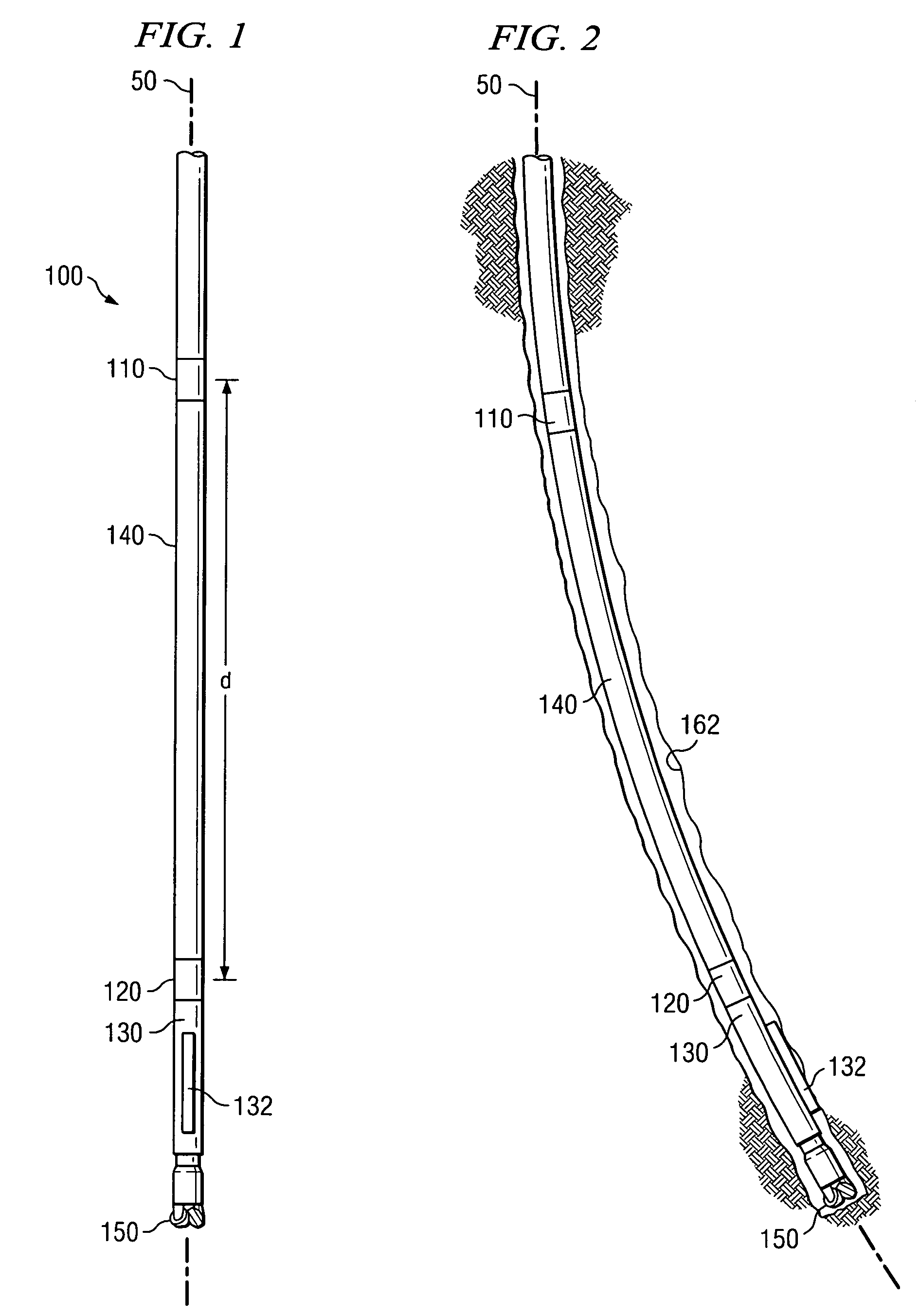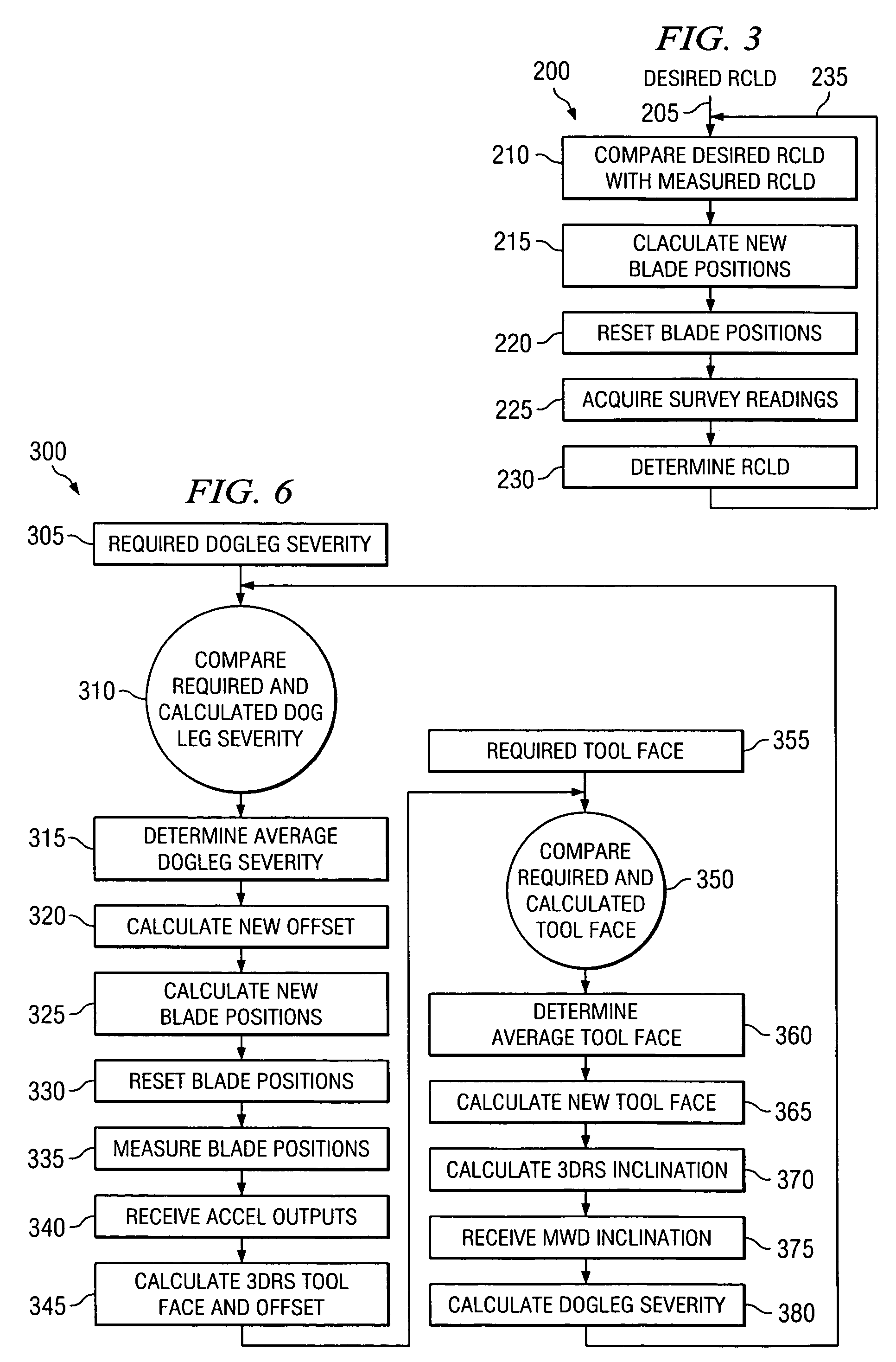Control method for downhole steering tool
a control method and steering tool technology, applied in the direction of directional drilling, borehole/well accessories, surveys, etc., can solve the problems of reducing limiting both the frequency of survey data available, and at best difficult sustained control, so as to improve the control of the drilling process, reduce the tortuosity of the borehole, and save the communication bandwidth.
- Summary
- Abstract
- Description
- Claims
- Application Information
AI Technical Summary
Benefits of technology
Problems solved by technology
Method used
Image
Examples
Embodiment Construction
[0020]It will be appreciated that aspects of this invention enable the rate of change of the longitudinal direction (RCLD) of a borehole to be measured. It will be understood by those of ordinary skill in the art that the RCLD of a borehole is typically fully defined in one of two ways (although numerous others are possible). First, the RCLD of a borehole may be quantified by specifying the build rate and the turn rate of the borehole. Where used in this disclosure the term “build rate” is used to refer to the vertical component of the curvature of the borehole (i.e., a change in the inclination of the borehole). The term “turn rate” is used to refer to the horizontal component of the curvature of the borehole (i.e., a change in the azimuth of the borehole). The RCLD of a borehole may also be quantified by specifying the dogleg severity and the tool face of the borehole. Where used in this disclosure the term “dogleg severity” refers to the curvature of the borehole (i.e., the sever...
PUM
 Login to View More
Login to View More Abstract
Description
Claims
Application Information
 Login to View More
Login to View More - R&D
- Intellectual Property
- Life Sciences
- Materials
- Tech Scout
- Unparalleled Data Quality
- Higher Quality Content
- 60% Fewer Hallucinations
Browse by: Latest US Patents, China's latest patents, Technical Efficacy Thesaurus, Application Domain, Technology Topic, Popular Technical Reports.
© 2025 PatSnap. All rights reserved.Legal|Privacy policy|Modern Slavery Act Transparency Statement|Sitemap|About US| Contact US: help@patsnap.com



